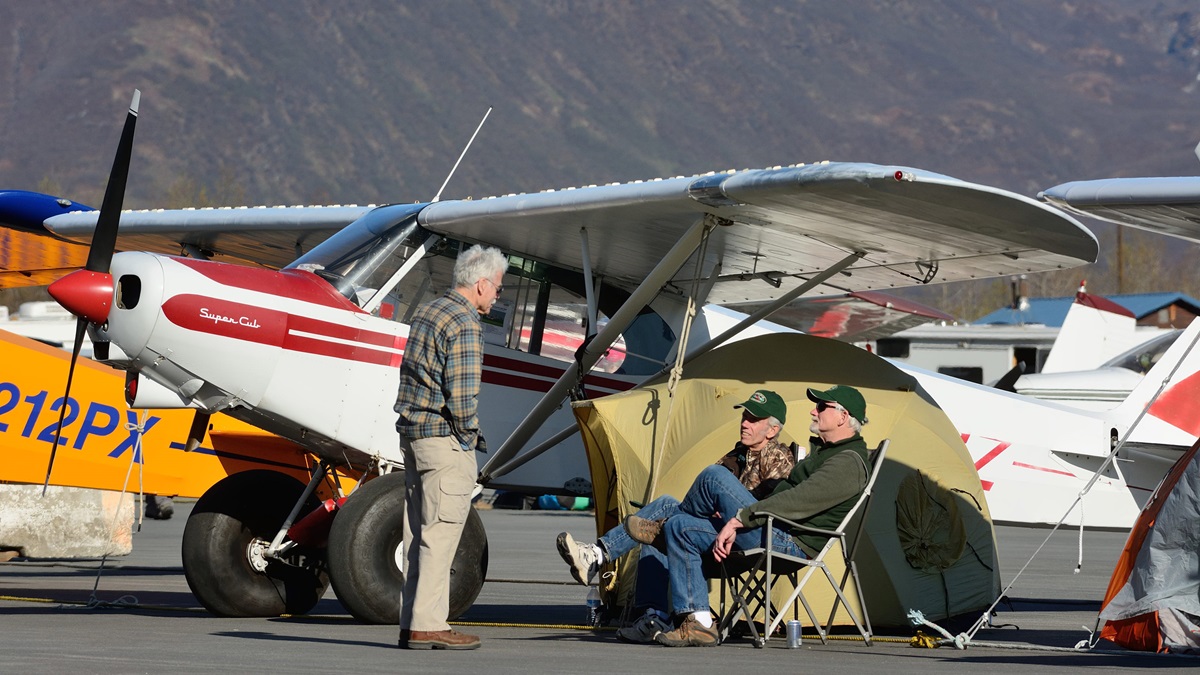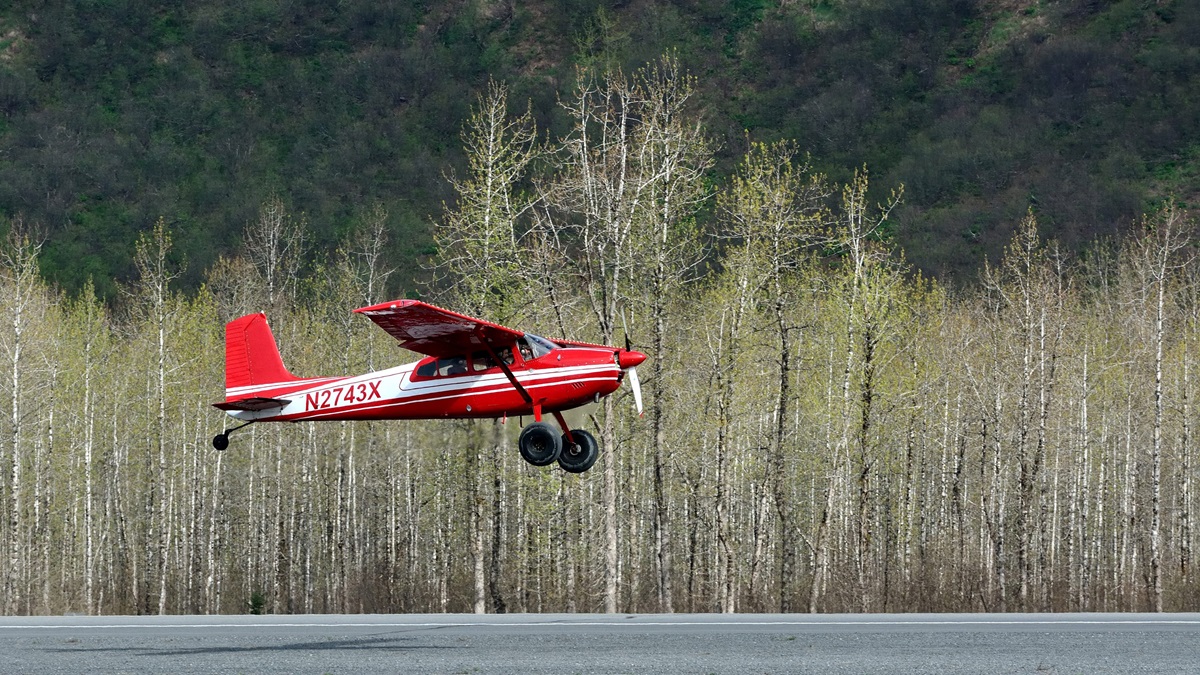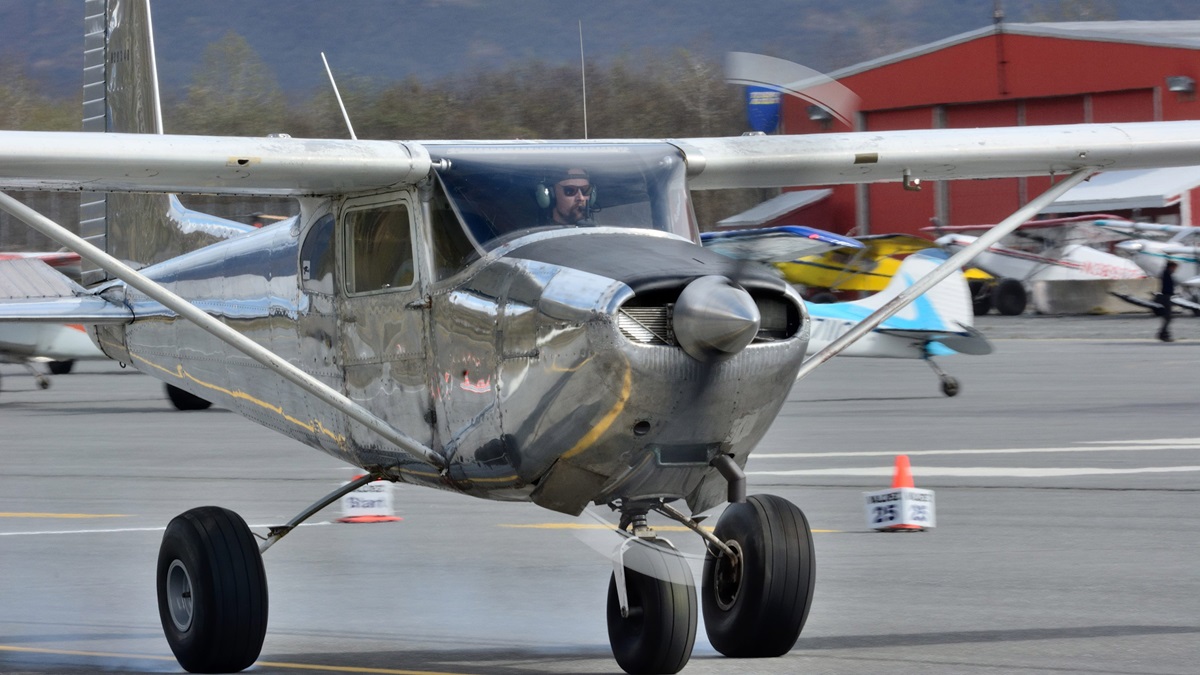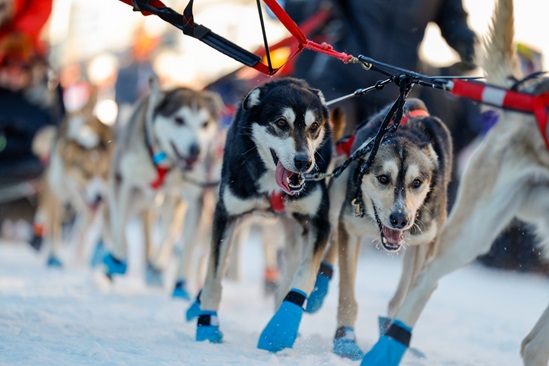Valdez extremes
Short takeoffs and landings, big crowds
The diminutive, highly modified Piper Cub flew slowly in ground effect along the taxiway parallel to Runway 24 at Alaska’s Valdez Pioneer Field, toward a white chalk line bracketed by bright orange cones. As it slowed further, the wing tips began to dip. The nose rose, then started down. Its tundra tires planted firmly just beyond the line, and the airplane stopped 10 feet, five inches from the mark—setting a new short-field landing record at the Valdez Fly-In and Air Show.
Of course, landing alone does not a short-takeoff-and-landing victory make. Frank Knapp’s Little Cub, competing in the light sport class, had taken off in 14 feet, seven inches—for a total score of 25 feet, winning the class and the event. (Under the Valdez STOL competition rules, takeoff begins from the starting line, and judges measure where the main wheels leave the ground; on landing, mains cannot touch down before the line, and distance is measured from where the mains stop.) The overall second-place combined distance was 75 feet. A large crowd braved steady 15-knot winds; temperatures in the low 40s; and, later in the day, cold drizzle to witness the feats.
The couple completed the rebuild, came back to Valdez, and won the overall competition. But they skipped the 2016 event. “We did five mods. [My wife] reminded me that you only do one at a time. A couple of them didn’t work out very well. I couldn’t get it rebuilt enough to get it here. We put a lot of mods into it, and ultimately we threw a lot of mods away.”

Knapp has stuck with the leading-edge slats, and custom flaps. Special landing gear makes a huge difference. “Being able to land now and just drop it on—you know, we stabbed it onto one gear—and have no rebound, that was the TK 1 [Racing’s landing gear]. They just did an awesome job with that.” The Little Cub’s fuselage originally is from a 1939 Piper J-3 Cub. “It started out at 685 pounds with an 85-horse [engine], and it was a well-balanced machine. But you can’t have too much horsepower, so now it’s got an O-320 with about 180 horses, and with the different mods that we’ve put into it, we’re running about 800 pounds.”
To what does Knapp attribute the fact that he has won every time he’s competed in Valdez? “I’ve got a wonderful wife that helps me at every step of the way,” he said.
The 2017 event saw exceptional attendance, said Joe Prax, president of the Valdez Fly-In. “We had 157 airplanes on the ground Friday night, which is a record for us.” A low marine layer on Saturday morning cut off arrivals and forced cancellation of the poker run, with its popular beach landing—but clouds lifted for the afternoon STOL competition. “We had an awesome short takeoff and landing competition. That’s what we’re known for,” Prax said. Attendance on Saturday was 2,500 people. “It was a good turnout for us. It’s been a fantastic weekend.”
There were attendees from Denmark; Cape Town, South Africa; Tennessee; and Georgia. Pilots flew in from across Alaska and as far away as North Carolina—two people in a pressurized Cessna 210—and one from Maine.
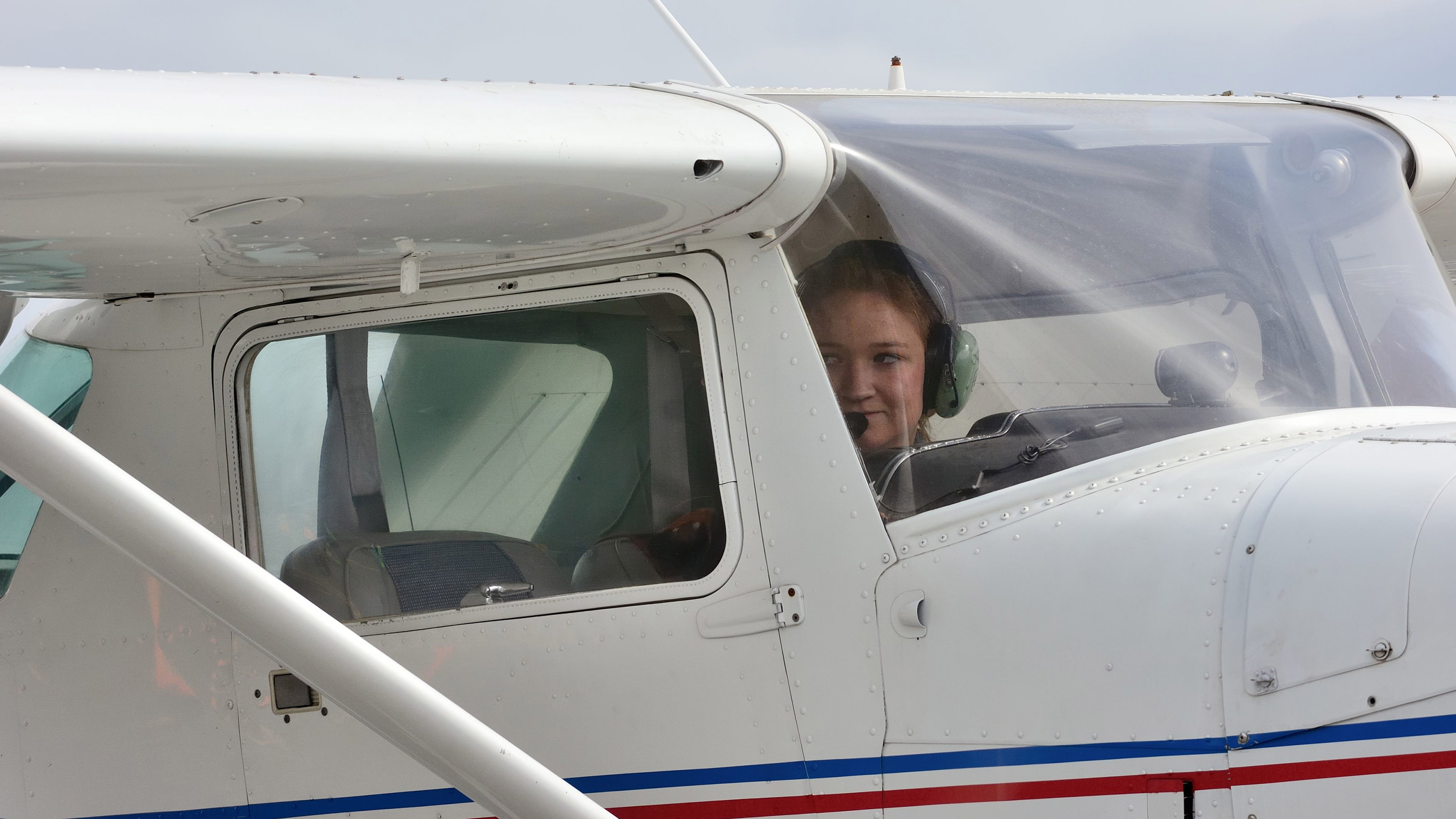
The latter was Lydia Jacobs, 19, of Corinth, Maine, who flew 60 hours over 17 days in her Cessna 150. She sold her car to raise gas money. Beginning the trip as a 450-hour private pilot, she’s almost finished with her commercial—the cross-country requirement now more than met—and plans to seek a flying job. “I definitely learned a lot, and I’m very grateful for the people who helped me along.” She said she had to power through a lot of adversity to reach Alaska, and that many people she met were skeptical she could get there—skepticism that didn’t diminish until she got much closer to Alaska.
Jacobs competed in the STOL contest’s Light Touring class. Her score of 277 feet (takeoff, 126 feet; landing, 151 feet) placed her 118 feet behind third place, but she was happy with her performance. “Both of them are a personal best,” she said. She also was commended for going around when airplanes in her heat bunched up.
This summer, Jacobs has a job working the dock for a floatplane operator on Lake Hood in Anchorage. “I want to be a commercial pilot for a small outfit. I’d like to be a bush pilot,” she said.
Other class winners for the 2017 Valdez STOL contest were, Heavy Touring, Wes Erb, Cessna 180, (takeoff, 90; landing, 135; total 225); Light Touring, Mark Hasner, Cessna 170B, ( 63-84-147); Bush, Chris Wyekoff, Piper PA-18 Super Cub, (59-80-139); and Alternate Bush, Tom Hudzinski, SQ-2, (47-28-75). More results will be posted on the event’s website.
Valdez is well suited to the STOL contest. “We have a steady sea breeze, we’re obviously at sea level, and it’s a little cooler than some other places,” Prax said. “All of that is conducive to great airplane performance. The biggest thing may be that steady sea breeze—that’s just constant wind that you can fly in.”
And if other STOL events are imitation, they’re the sincerest form of flattery. “The STOL competition is getting more popular. It’s been done in Oshkosh, it’s been done in Texas at the STOL Roundup, there are getting to be several other places up here that run it as well. I’m all for it—the more the merrier,” Prax said. “Let’s expand this and get more people into flying.” Many use the Valdez rules or a variant, he added. “We’re always happy to help with that.”


